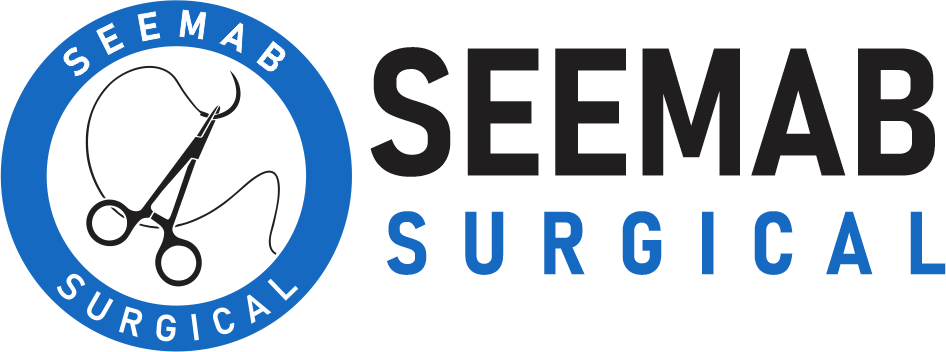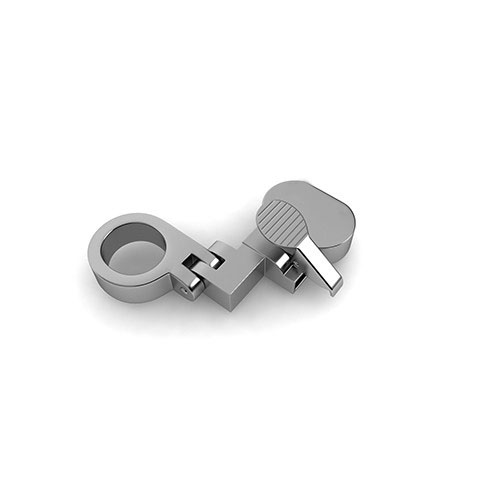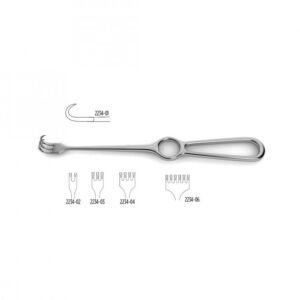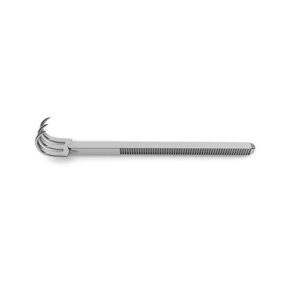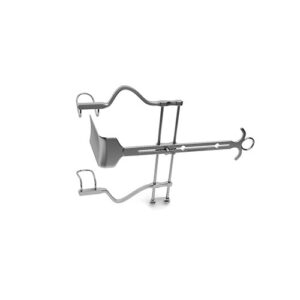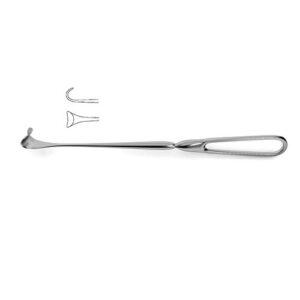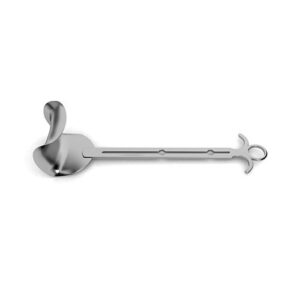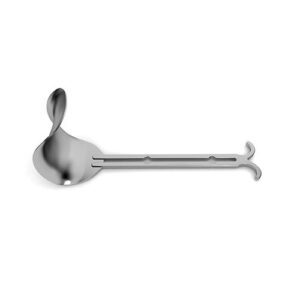| Name | Universal Ring Retractor Ima Ratchet Mechanism |
| Lead Time | 0-10 days |
| Specialty | General Instruments-Hooks & Retractors – Universal Ring Retractor System |
| Material Finish | Stainless Steel |
| Grade | Premium Operating Room |
| Units of Measurement | Each |
| Manufacturer | seemab surgical |
| Sterility | Non-Sterile |
| Usage | Reusable |
Universal Ring Retractor
Universal Ring Retractor
Universal Ring Retractor IMA Ratchet Mechanism contains a place to hold the handle of an IMA retractor blade and a ring for the IMA cross bar. This mechanism is mounted onto a ring retractor and helps the blades stay in place throughout the course of a surgical procedure. If this item contains defects in materials and workmanship, it is covered by the seemab surgical manufacturer warranty.
SKU:
VI-01-585
Category: Hooks & Retractors
Description
Shipping & Delivery
Related products
Cottle Tenaculum
Cottle Tenaculum
angled, 6-1/4" (16.0 cm)
Cottle Tenaculum has a long, slim handle with a hook that tapers into an angled point. The primary use of this hook is to grasp or hold tissue away from the surgical site in order to provide the surgeon with greater visibility to the area. This instrument is offered in a 6 ?" length.
Balfour Abdominal Retractor W/ Fixed Side Blades – 4″ Deep
w/ fixed fenestrated side blades, 4" deep & center blade #2470-73 (3-3/8" x 2-1/2")
Balfour Abdominal Retractor with Fixed Side Blades contains fenestrated side blades that are fixed onto the instrument. This retractor is primarily used during surgeries in which large abdominal incisions need to be held open to provide more visibility to the surgeon. Moreover, the instrument is offered in different sized spreads to accommodate different patients.
Balfour Narrow Center Blade
Balfour Narrow Center Blade
for detachable balfour retractor systems
Balfour Narrow Center Blade consists of a flat blade on one end that is curved at a right angle. This blade also contains small lips on the edges to keep a large incision open. The handle of this instrument is fenestrated and has small loops that rods from lateral blades can fit onto in order to create the desired spread size.
Cushing Vein Retractor – Fenestrated Handle
Cushing Vein Retractor - Fenestrated Handle
fenestrated handle
Cushing Vein Retractor is a more light-weight instrument due to its fenestrated handle. The lengths can range from 9" to 16." This vein retractor can be used during general surgeries to retract veins or other small tissues. It may also be used in other medical procedures such as neurosurgery to pull back tissue.
Crile Retractor
Crile Retractor
double-ended, 3.0 mm x 11.0 mm & 6.0 mm x 20.0 mm blades, 4-1/2" (11.4 cm)
Crile Retractor is a hand-held instrument that can hold back tissue or organs so that the surgical site can be accessed. This retractor has a wide body and right-angle blades on each end to maintain the desired position once inserted around the edges of an incision. It is offered in a 4 ?" length, which is idea for smaller openings.
Balfour Supra-Pubic Center Blades
Center Blades
for balfour retractor systems w/ fixed side blade
Balfour Supra-Pubic Center Blades can be useful during procedures such as a Suprapubic cystotomy. When the bladder is retracted, this instrument provides the surgeon with a larger viewing area so that the procedure can be conducted. This blade is presented in two different sizes.
Balfour Standard Center Blade – For Fixed System
For balfour retractor systems w/ fixed side blades
Balfour Supra-Pubic Center Blade is available in different sizes to accommodate different surgical procedures and patients. The blade is curved and has lips around the edges to assist in operations such as a Suprapubic Cystostomy. This center blade may also be detached when used with the Balfour Retractor Systems.
Alm Retractor
Alm Retractor
4x4 prongs
Alm Retractor is a device used during general surgical procedures that involve retracting tissue in small areas of the body. This retractor features 4x4 prongs that are available in sharp or blunt points depending on the type of tissue being held. The instrument is also self-retaining due to a mechanism that allows the surgeon to keep it in a desired place once it has been inserted.
